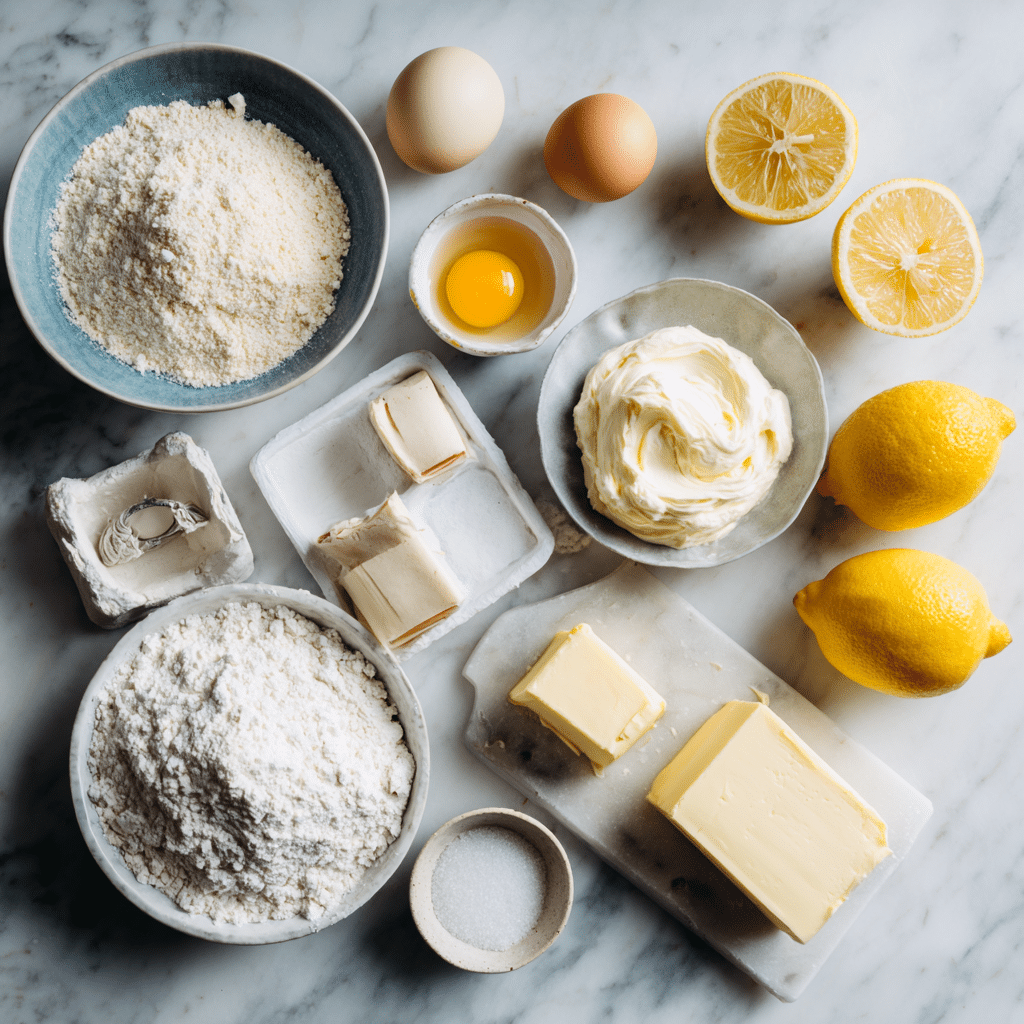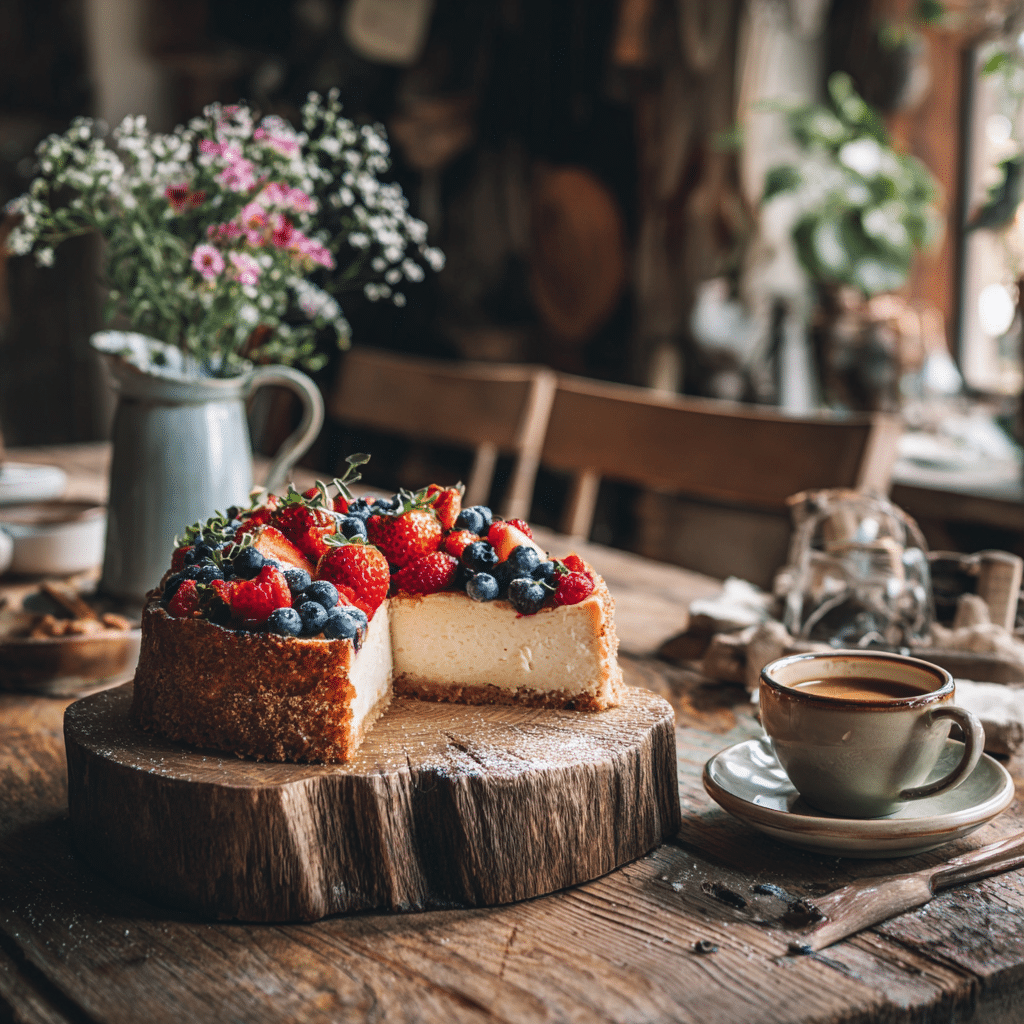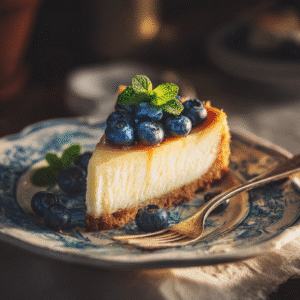Gluten Free Cheesecakes changed my life the day I realized I didn’t have to abandon that velvety, tangy slice I adored as a young chef in Tuscany. Before I went gluten free, I never thought twice about the crust it was all buttery graham crackers or biscuit bases. But when fatigue forced me to face my gluten intolerance, I refused to give up my favorite desserts. That’s how my journey to recreate the classics began one cheesecake at a time.
Table of Contents
Finding My Way Back to Cheesecake Bliss
Growing up in a small Tuscan town, cheesecake wasn’t exactly Nonna’s staple. But my culinary training led me to New York’s iconic cheesecake counters I fell for that smooth, creamy filling resting on a sweet, crumbly base. The shock of having to ditch gluten could’ve meant the end of that love affair. Instead, I saw it as an invitation to reinvent the crust using almond flour, gluten-free graham crackers, and even crushed nuts.
Gluten Free Cheesecakes became my signature dessert, a reminder that no one should sacrifice flavor for health. If you crave more gluten free bakes, you’ll love my gluten-free carrot cake it’s as moist and satisfying as any classic bakery version.
Why Everyone Deserves a Gluten Free Cheesecake
Gluten Free Cheesecakes are more than safe indulgence for people with celiac disease they’re proof that healthy baking can taste every bit as rich as traditional recipes. Fresh berries, zesty citrus, or a drizzle of dark chocolate can elevate each bite. When friends come over, they can’t tell the difference. And if you’re planning a brunch, pair leftovers with my no-knead gluten-free bread for a sweet salty combo you won’t forget.
Crafting the Perfect Gluten Free Cheesecake Crust

A great Gluten Free Cheesecake starts with a base that’s crumbly yet holds firm when sliced. For years, I experimented with everything from almond flour to crushed gluten free cookies. One trick I swear by is combining almond meal with a bit of coconut flour this blend keeps the crust light yet rich, with just enough crispness to contrast the creamy filling.
Nut Based Crusts and Simple Substitutions
If you can’t find ready made gluten free graham crackers, don’t stress. Ground almonds, hazelnuts, or pecans mixed with melted butter make a nutty, wholesome base that complements the tang of the cheesecake beautifully. Press the mixture firmly into your pan so it doesn’t crumble later. Bake it for ten minutes before adding your filling this quick step keeps the crust from turning soggy.
Need a quick crust fix? Check out my gluten-free biscuits they crumble perfectly into a homemade cookie crust when you’re short on time.
Gluten Free Fillings: Creamy, Light, and Versatile
While the crust is crucial, the filling makes the cheesecake shine. For the fluffiest Gluten Free Cheesecakes, use a mix of cream cheese and mascarpone. Mascarpone adds an Italian touch that feels decadent but keeps the texture smooth. Always beat your ingredients slowly overmixing can cause cracks.
Want to try a refreshing twist? Fold a bit of lemon zest into the batter. It cuts the richness and lifts every bite. If you love bright flavors, pair your cheesecake with my gluten-free lemon bars for a dessert spread that’ll impress your whole table.
3: Baking Gluten Free Cheesecakes Without Stress
When you’ve mastered the crust and creamy filling, the next challenge is baking Gluten Free Cheesecakes without cracks or dryness. Many new gluten free bakers worry the texture won’t match the classic version but with the right tips, your cheesecake will be just as silky and satisfying.
Foolproof Baking Tips for Gluten Free Cheesecakes
The secret to flawless Gluten Free Cheesecakes is a steady, gentle bake. Forget the stress of a water bath. Instead, bake low and slow 300°F is perfect. Place your cheesecake on the middle rack and watch for that telltale jiggle in the center when the edges are firm. This keeps the filling smooth and prevents sudden temperature shocks.
Once baked, let your Gluten Free Cheesecakes rest in the oven with the door cracked open for an hour. This small step stops the top from splitting and makes slicing a breeze. For an even easier start, try my no bake version the same rich flavors, but chilled to set. If you love soft, homemade gluten free bakes, don’t skip my soft homemade gluten-free bread it pairs perfectly with a cheesecake dessert spread.
Serve and Savor Every Slice
The fun part? Decorating your Gluten Free Cheesecakes! Top each slice with fresh berries, a drizzle of chocolate, or a spoonful of compote. Bright fruit balances the creamy filling and makes your dessert shine.
For a cozy weekend dinner, serve your cheesecake with my hearty gluten-free lasagna soup comfort food with a sweet, gluten free ending. It’s proof that Gluten Free Cheesecakes deserve a place at every table, no wheat needed.

Finishing Your Gluten Free Cheesecakes With Confidence
When I first started baking Gluten Free Cheesecakes, I worried they’d crack, sink, or taste “different.” But with practice, I discovered that gluten-free versions often taste even richer. The final touch is serving them right so every slice feels like a celebration.
Presentation: Make Your Gluten Free Cheesecakes Shine
The beauty of Gluten Free Cheesecakes is how versatile they are. For a classic look, top yours with a simple berry compote. Want extra crunch? Sprinkle toasted nuts or crushed gluten free biscuits for texture. For a special brunch spread, pair your cheesecake with my gluten-free chicken taquitos it’s an unexpected combo that always gets compliments.
Keep slices neat by dipping your knife in warm water between cuts. Serve chilled and store leftovers in an airtight container to keep them fresh for up to five days.
Make It Yours: Play With Flavors and Toppings
Once you’ve nailed the basics, get creative. Add citrus zest for a bright twist, swirl in blueberry sauce before baking, or mix mascarpone for an Italian flair. For holiday tables, mini Gluten Free Cheesecakes topped with candied nuts or chocolate drizzle always steal the show.
Looking for more sweet inspiration? My gluten-free blueberry muffins pair beautifully with leftover cheesecake crumbs turned into a crunchy topping. That’s how we keep flavors alive in my kitchen waste nothing, enjoy everything.
Conclusion: A Slice of Italy, Gluten Free
Gluten Free Cheesecakes show that you never have to give up the flavors you love. I believe every dessert can feel indulgent without leaving you tired or bloated because we all deserve to savor the sweet moments. From my Tuscan kitchen to yours, may your cheesecakes be creamy, your crusts crumbly, and your life deliciously gluten free.
Is Philadelphia cheesecake filling gluten free?
Yes! The plain Philadelphia cream cheese and their classic cheesecake filling don’t contain gluten. Always check labels for cross contamination warnings.
Can people with celiac disease eat cheesecake?
Absolutely as long as the crust and all ingredients are certified gluten-free. Many store-bought crusts contain wheat, so homemade gluten-free crusts are safest.
Is mascarpone gluten free?
Yes, authentic mascarpone is naturally gluten free. It’s an Italian cheese made from cream perfect for a silky cheesecake filling.
Does tiramisu have gluten?
Traditional tiramisu uses ladyfingers made with wheat, so it’s not gluten free by default. But just like Gluten Free Cheesecakes, you can make a gluten free version using gluten free ladyfingers or sponge cake.
Is Biscoff gluten free?
Unfortunately, classic Biscoff cookies contain wheat and are not gluten-free. For that caramelized flavor, try a gluten free cookie alternative for your cheesecake crust.

Gluten Free Cheesecake
Ingredients
- 1 ½ cups almond flour
- ¼ cup coconut flour
- ¼ cup granulated sugar
- 5 tablespoons unsalted butter melted
- 3 8 oz packages cream cheese, softened
- 1 cup mascarpone cheese
- 1 cup granulated sugar
- 3 large eggs
- 1 teaspoon pure vanilla extract
- Zest of 1 lemon optional
- Fresh berries or fruit compote for topping
Instructions
- Preheat oven to 300°F (150°C). Line a springform pan with parchment paper.
- In a bowl, mix almond flour, coconut flour, sugar, and melted butter until combined.
- Press crust mixture firmly into the base of the pan. Bake for 10 minutes, then let cool.
- In a mixing bowl, beat softened cream cheese and mascarpone on low speed until smooth.
- Add sugar, vanilla, and lemon zest (if using). Beat slowly until just combined.
- Add eggs one at a time, mixing gently after each addition. Do not overmix.
- Pour filling over the cooled crust and smooth the top.
- Bake for 50-60 minutes, or until the edges are set and the center has a slight jiggle.
- Turn off the oven, crack the door, and let cheesecake cool inside for 1 hour.
- Chill in the fridge for at least 4 hours or overnight. Top with fresh berries or compote before serving.

